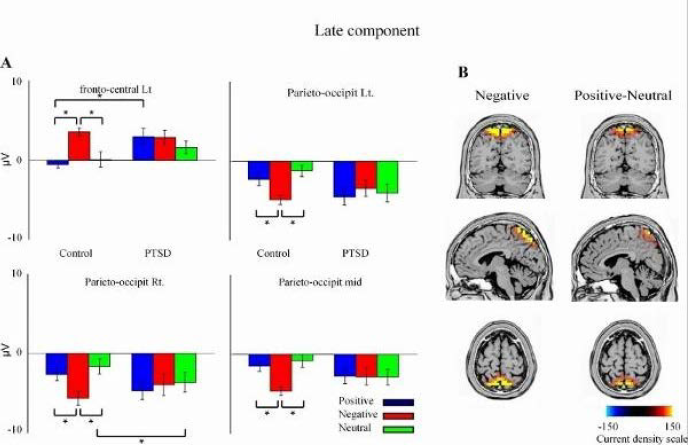No CrossRef data available.
Article contents
2629 – Impaired Emotional Processing is Reflected in Long Latency Event Related Potentials During Visual Emotional Stimulation in Post-Traumatic Patients
Published online by Cambridge University Press: 15 April 2020
Abstract
PTSD patients display abnormal emotional processing and bias towards negative emotion. Long latency eventrelated potentials (ERP’s) are composed of the P300 and subsequent slow wave activity. These ERP’s are hypothesized to be relevant for attentional and initial memory storage events as well as emotional processing. objectives: This study tested the hypothesis that abnormal emotional processing in PTSD is reflected in altered brain activity, as measured via ERP’s.
Detect differences in cortical activity and emotional processing in PTSD patients as compared to controls.
ERP’s were recorded from 14 PTSD and 14 control subjects while viewing emotion-laden pictures. Subjects were instructed to press a button depending on the presence of a person or human part in the picture and response time was recorded.
Long latency ERP data (300-1035 msec) showed valence dependent activity in control subjects distinguishing negative vs. positive and neutral pictures. PTSD patients, however, lacked differential activation and had similar brain activity across all picture valances, which resembled the pattern observed in controls only for negative stimuli.
[Late ERP’s 980-1035msec]

PTSD patients also exhibited longer response time.
Our results demonstrate abnormal cognitive-emotional processing in PTSD patients and may underlie overgeneralization processes that are part of this disorder.
- Type
- Abstract
- Information
- European Psychiatry , Volume 28 , Issue S1: Abstracts of the 21th European Congress of Psychiatry , 2013 , 28-E1557
- Copyright
- Copyright © European Psychiatric Association 2013





Comments
No Comments have been published for this article.